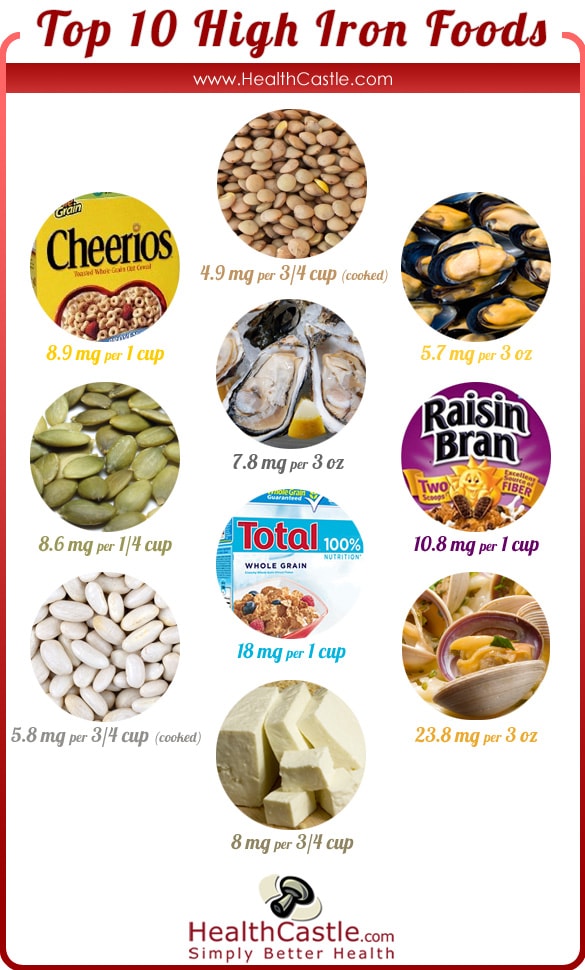
Written By: Gloria Tsang, RD
Title: Founding Registered Dietitian
Alumni: University of British Columbia
Last Updated on:

A diet of high iron foods along with iron supplements is often recommended for women with iron deficiency anemia. However, as iron supplements often result in discomfort, particularly constipation and nauseousness, women prefer to choose eating iron-rich foods more often instead.

Iron plays an integral role in the formation of hemoglobin in blood and myoglobin in muscles, both of which carry oxygen to the cells. That’s why fatigue and tiredness is the first symptom most people notice when they may be low in iron.
The recommended intake for iron is:
Iron absorption is often influenced by multiple factors. One important factor being the form of iron. Heme Iron, found in animal sources, is highly available for absorption. Non-heme iron on the other hand, found in vegetable sources, is less available.
Warning: Pregnant women should not eat liver because of its high Vitamin A content. Large amounts of Vitamin A can be harmful to the baby.
The absorption of non-heme iron can be improved when a source of heme iron is consumed in the same meal. In addition, the iron absorption-enhancing foods can also increase the absorption of non-heme iron. While some food items can enhance iron absorption, some can inhibit or interfere iron absorption. Avoid pairing these iron-inhibiting foods when you’re eating iron-rich foods in the same meal.
Alumni: University of British Columbia – Gloria Tsang is the author of 6 books and the founder of HealthCastle.com, the largest online nutrition network run by registered dietitians. Her work has appeared in major national publications, and she is a regularly featured nutrition expert for media outlets across the country. The Huffington Post named her one of its Top 20 Nutrition Experts on Twitter. Gloria’s articles have appeared on various media such as Reuters, NBC & ABC affiliates, The Chicago Sun-Times, Reader’s Digest Canada, iVillage and USA Today.
anemia, beef, cereal, clams, eggs, grocery aisle, high iron foods, iron, iron rich food list, iron rich foods, lentils, mussels, oysters, prune juice, pumpkin seeds, tofu
The Best Time to Take Dietary Supplements
Health Canada Allergen Labelling Enforces Plain Language Warnings
Does anyone know what her source is for the heme and non-heme iron content of foods tables?